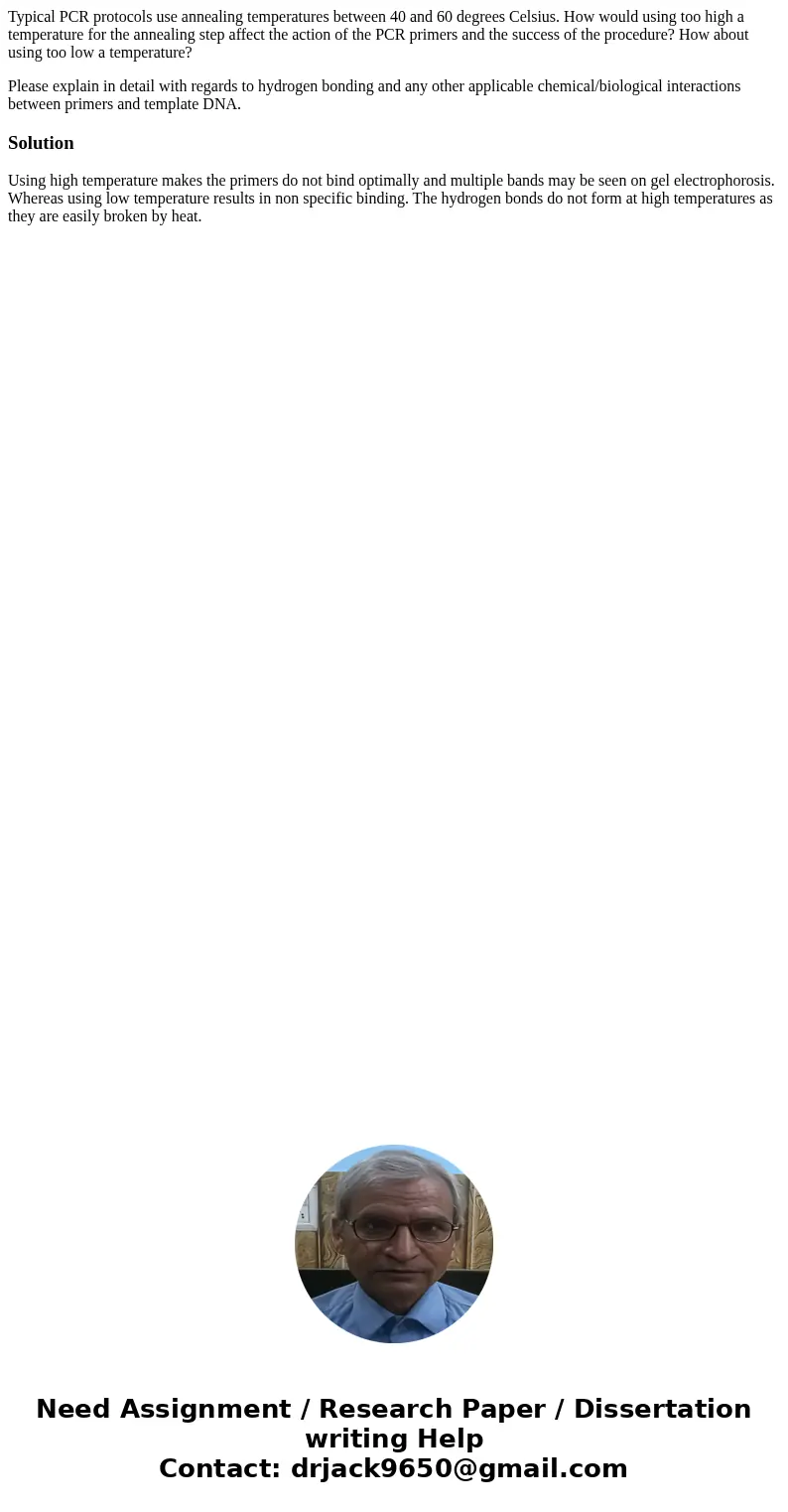Typical PCR protocols use annealing temperatures between 40
Typical PCR protocols use annealing temperatures between 40 and 60 degrees Celsius. How would using too high a temperature for the annealing step affect the action of the PCR primers and the success of the procedure? How about using too low a temperature?
Please explain in detail with regards to hydrogen bonding and any other applicable chemical/biological interactions between primers and template DNA.
Solution
Using high temperature makes the primers do not bind optimally and multiple bands may be seen on gel electrophorosis. Whereas using low temperature results in non specific binding. The hydrogen bonds do not form at high temperatures as they are easily broken by heat.

 Homework Sourse
Homework Sourse